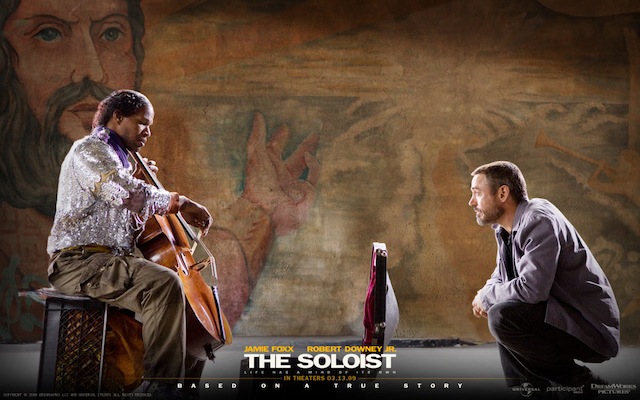Already Undercutting Parity?
Do Publishers Owe Us More?
I’ve been writing books full-time since 1986 and, believe me, I know that publishing books is a business. I also realize that publishers have to give the public what it wants. (Recently that has been love struck vampires and young English magicians.) I admire authors who can write books that reach so many millions.
But as authors and publishers do we have an obligation to go beyond the profit line and expose wrongs, introduce new ideas, challenge conventional thinking, and confront the afflicted and afflict the comfortable?
We Know What To Do!
Just before Christmas, I was the Master of Ceremonies for the 13th Annual Woodley House Movie Benefit in Washington D.C., which meant that I got to give a three minute talk about mental health before a movie was shown. As always, I spoke about how 18 percent of persons in jails and prisons have severe mental illnesses and need treatment not imprisonment. I talked about how 17 percent of the 130,000 homeless persons in our nation are chronically homeless, meaning that they move between the streets and jails and shelters – and most of them have severe mental illnesses and are not receiving meaningful treatment.
And then I announced some good news. We know how to help many persons with mental illnesses.
How to Tackle Homelessness and Mental Illness

“The Soloist” Enlightens: A Compassionate, Useful Message on How to Tackle Homelessness and Mental Illness
This article by Pete Earley was originally published in USA TODAY
As the father of a son with a mental illness, I cringe whenever Hollywood releases a movie with a main character who has schizophrenia or bipolar disorder. All too often, the ill person is depicted as a psychotic killer or an odd-ball genius whose disorder is enlightening rather than debilitating. The Soloist avoids these clichés and gives audiences a realistic look at how untreated mental illnesses can ravage the lives of its victims. Based on a true story, the film portrays the friendship that develops between Los Angeles Times columnist Steve Lopez and Nathaniel Ayers, a homeless, gifted musician with schizophrenia.
The frustration that Lopez feels is all too familiar to families such as mine, as he attempts to help Ayers navigate a mental health system that a national presidential commission appointed by
George W. Bush found to be “fragmented and in disarray.” But the reason I cheered when The Soloist ended was not because of the problems that it documents, but rather two solutions that its screenwriters subtlety introduced into the script.
The first step Lopez takes to help Ayers is to get him into the Lamp Community, which moves him into an apartment. Lamp is not a fictional creation. It is one of the most successful housing programs in the nation. It practices what is called “Housing First,” a concept that puts homeless persons into apartments immediately without requiring sobriety or participation in medical treatment. This is completely opposite of traditional housing programs that refuse to rent apartments to persons who are not mentally stable or sober.
Importance of Housing
Housing First advocates argue that it’s impractical to expect a homeless person struggling with a chronic mental illness, or a drug or alcohol addiction, to focus on recovery if he is sleeping under bridges and being attacked by thrill-seekers. Before someone can recover, he needs a safe place to live. Lamp and other Housing First practitioners emphasize that they listen to what their clients want, rather than demanding they behave a certain way.
But clients are not simply handed an apartment key. Tenants pay 30% of their income for rent (if they earn nothing, they pay nothing) and in most cases, they must meet with a team from the Assertive Community Treatment Association twice a month. Rather than demanding that an ill person report to a dozen agencies for help, ACTA sends a team of professionals directly to clients in their apartments.
A team usually includes a psychiatrist, social worker, nurse, substance abuse counselor, vocational rehabilitation worker and peer specialist (a person who has a mental illness but is managing it successfully).
High Success Rate
Lamp’s personalized approach claims an 85% success rate, which is the highest in the nation and extraordinary considering that many of its clients lived on the streets for decades.
The Corporation for Supportive Housing, a national group that provides funding for groups such as Lamp, insists that supportive housing not only helps people recover but also saves tax dollars by reducing costly emergency room visits, stays in state mental hospitals and nursing homes, and the use of jails and prisons as de facto asylums.
Linda Kaufman, who runs Pathways to Housing, a successful housing-first group in Washington D.C., says such programs could end chronic homelessness for people with serious mental illnesses in the nation’s capital within five years if units were available. It is not a question of knowing what to do, she explains, but a question of whether we will do it.
The other solution The Soloist offers comes at the movie’s end, when Lopez notes that while he was unable to heal Ayers’ mental illness, he did become his friend. While Lopez modestly questions the importance of his friendship, the late Tom Mullen, who created a much-honored recovery program in
Miami for severely mentally ill convicted felons, called friendship paramount to recovery: “These are the most isolated persons in our society. How can someone become mentally well if they are viewed as social lepers?”
Perhaps that’s the most valuable lesson here. Once Lopez saw Ayers as a person, it was more difficult to hurry by him on the street. The psychotic, homeless man pushing a grocery cart suddenly wore a human face.


